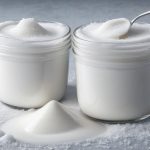If you’re an avid Keurig user, you may be wondering about the shelf life of those convenient and flavorful K-Cup pods. How long can you expect them to last before the flavor and quality start to diminish? Let’s explore the nuances of Keurig cups, their shelf life, and how to maximize the freshness of your coffee experience.
Contents
Key Takeaways:
- Keurig K-Cup pods have a recommended shelf life of 12 months for the best results.
- The best by date, found on the bottom of every box, indicates when the pods will taste their freshest.
- While expired K-Cup pods won’t make you sick, the quality and flavor may diminish over time.
- Proper storage in a cool, dry place away from direct sunlight is crucial for maintaining freshness.
- Maximize your coffee experience by ensuring the seal and packaging of the pod are intact before use.
Do K-Cup Pods Go Bad?
K-Cup pods have a “best used by date” rather than an expiration date. This date can usually be found on the side of the cup or the bottom of the box. As long as the seal and packaging of the pod are intact, K-Cups generally won’t go bad for at least 8 months to a year.
As an example, Keurig’s best used by dates are printed on the side of the K-Cup pods and indicate when the coffee will taste its freshest. The company recommends using the pods within that timeframe for the best coffee experience possible. However, it’s important to note that the coffee may still taste fresh beyond the best used by date.
The reason K-Cup pods have a longer shelf life is due to the preservation methods used during the packaging process. The pods are flushed with nitrogen and sealed tightly, preventing oxygen, light, and moisture from degrading the coffee quality and freshness.
To give you a better idea, here’s a breakdown of the factors that contribute to the preservation of K-Cup pods:
| Preservation Factors | Description |
|---|---|
| Airtight seal and packaging | The pods are tightly sealed, preventing oxygen from oxidizing the coffee grounds and preserving their freshness. |
| Nitrogen flush | K-Cup pods are filled with nitrogen, which displaces the oxygen in the packaging. Nitrogen is an inert gas that helps maintain the coffee’s quality and aromas. |
| Protection from light and moisture | The packaging is designed to shield the coffee from exposure to light and moisture, which can degrade the flavor and overall quality. |
While the best used by date indicates the optimal freshness of K-Cup pods, it’s worth noting that the coffee may still taste fresh and enjoyable beyond that date. However, personal taste preferences may vary, and some individuals may prefer their coffee to be consumed within the recommended timeframe for peak flavor.
What Makes K-Cups Expire?
Coffee, including K-Cups, begins to lose its freshness as soon as it’s roasted. Most roasts will retain their flavor for 8-10 months, with optimal freshness found in fresh roasts from small batches. Once coffee is ground, it loses freshness and flavor even faster, as it is exposed to elements like light, temperature, and air.
K-Cup coffee pods are at the bottom of the line in terms of freshness, as the beans used in K-Cups are exposed to elements during the roasting and packaging process. By the time the pods reach consumers, the ground coffee is generally considered stale.
Can You Use Expired K-Cups?
While technically K-Cups do not expire, using expired pods may result in a decline in taste and freshness. If the seal and packaging of the pod are intact, you can still drink expired K-Cups without making yourself sick. However, the stale flavor may not provide the same enjoyable coffee experience. It is recommended to dispose of the pod if there is a broken seal or signs of liquid exposure that could affect the quality and safety of the coffee.
When using expired K-Cups, it’s important to consider the taste and freshness. The quality of the coffee may diminish over time, impacting the overall flavor. The freshness of the coffee plays a significant role in the enjoyment of your cup, and expired K-Cups may not deliver the desired taste.
Expired K-Cups can have a noticeable difference in flavor compared to fresh pods. The coffee may taste stale or have an off-putting aroma. For those who value the quality and freshness of their coffee, using expired K-Cups may not meet their expectations.
While consuming expired K-Cups won’t make you sick, it’s essential to prioritize taste and freshness. If you’re unsure about the quality of a K-Cup, check the seal and packaging for any signs of damage or liquid exposure. If the pod shows any indicators of compromise, it’s best to dispose of it to ensure the quality and safety of the coffee.
| Pros | Cons |
|---|---|
| Expired K-Cups do not pose health risks when consumed | Stale flavor and diminished freshness |
| Safe to use if the seal and packaging are intact | Potential for broken seal or signs of liquid exposure affecting quality |
| Convenient option if no alternative coffee available | May not provide the desired taste experience |
| – | Possible unusual aroma or off-putting coffee smell |
Assessing the Freshness of K-Cups
When it comes to assessing the freshness of your K-Cups, there are several key aspects to consider. By paying attention to factors such as damaged pods, liquid exposure, unusual odors, and the aroma and flavor of the coffee, you can ensure a high-quality brewing experience.
Checking for damaged pods: Inspect the exterior of the K-Cup pods for any signs of damage, such as holes or broken seals. Damaged pods can compromise the freshness of the coffee inside.
Looking for signs of liquid exposure: Examine the pods and their packaging for any indications of liquid exposure. Liquid exposure can contaminate the coffee and negatively impact its taste and safety.
Sensing unusual odors: Take a whiff of the pods and packaging. If you detect any strange odors that are different from the typical coffee smell, it could be a sign of spoilage or contamination.
Conducting a coffee smell test: Open a pod and give it a sniff. A fresh K-Cup should have a rich and inviting coffee aroma. If the smell is weak or off-putting, it might be a sign that the coffee has lost its freshness.
Performing a taste test: Brew a cup of coffee using one of the pods and assess the flavor. A good-quality K-Cup should deliver a satisfying and enjoyable coffee taste. If the coffee tastes stale or off, it’s best to dispose of the pods.
| Assessment Factors | Signs of Freshness | Signs of Potential Issues |
|---|---|---|
| Pod Condition | No damage, intact seals | Holes, broken seals |
| Liquid Exposure | No signs of liquid exposure | Liquid stains, wet packaging |
| Odor | Pleasant coffee smell | Unusual or strange odor |
| Coffee Aroma | Rich and inviting aroma | Weak or off-putting smell |
| Taste | Satisfying and enjoyable flavor | Stale or unpleasant taste |
Assessing the freshness of your K-Cups is essential to ensure a great coffee experience. By following these steps and conducting thorough tests, you can avoid brewing stale or potentially contaminated coffee. Remember, if your K-Cups fail these assessments, it’s best to dispose of them and find fresher alternatives.

How Long Do K-Cups Last?
When it comes to the lifespan of K-Cups, it’s difficult to provide a specific timeline. However, if you purchased the pods over 6 months ago, it’s safe to assume that they have expired. While the coffee brewed from these older pods won’t make you sick, it may not deliver the fresh and flavorful experience you desire.
Personal taste preferences and quality standards play a role in determining how long K-Cups can be enjoyed before the flavor becomes undesirable. It’s important to note that the coffee won’t be harmful to consume, but it may not meet your expectations in terms of quality.
Assessing the Freshness of K-Cups
When evaluating the freshness of K-Cups, there are a few things you can look out for:
- Check the packaging for any signs of damage, such as holes or broken seals.
- Inspect the pods for any liquid exposure or unusual odor.
- Perform a coffee smell test to ensure the pods still emit a rich coffee aroma.
- If possible, brew one pod and conduct a taste test to determine if the flavor is still enjoyable.
If the pods fail any of these assessments, it’s best to dispose of them to avoid brewing stale or potentially contaminated coffee.
| K-Cup Lifespan | Freshness Timeline | Coffee Quality | Expiration Period | Purchase Date |
|---|---|---|---|---|
| Varies | Over 6 months | May have a stale flavor | No specific expiration date | Over 6 months ago |
Also Read: How Long Can Cooked Pork Last In The Fridge?
Conclusion
Keurig K-Cup pods offer a convenient and quick way to enjoy a cup of coffee, but understanding their shelf life and proper storage is crucial to ensure a satisfying brew. The recommended shelf life for Keurig cups is 12 months, during which they maintain optimal freshness and brewing quality. Although K-Cup pods do not technically expire, the flavor and quality may gradually diminish after the recommended period.
To maximize the freshness of your Keurig cups, it is essential to store them properly. Keep the pods in a cool, dry place away from direct sunlight. This helps to maintain their flavor and aroma over time. Be sure to also check for any damage or signs of liquid exposure before using the pods. If a pod fails these assessments, it is best to discard it to avoid brewing stale or potentially unsafe coffee.
While expired K-Cup pods won’t make you sick, they may not provide the same enjoyable coffee experience as fresh pods. By following proper storage practices and regularly assessing the freshness of your Keurig cups, you can ensure that each cup of coffee you brew is of the highest quality and delivers the satisfying taste you expect.
Source Links
- https://crosscountrycafe.com/blog/5-rules-for-k-cup-expiration-dates/
- https://www.coffeeforless.com/blogs/coffee-for-less-blog/k-cup-coffee-pods-will-they-stay-fresh-forever
- https://www.roastycoffee.com/do-keurig-cups-expire/




